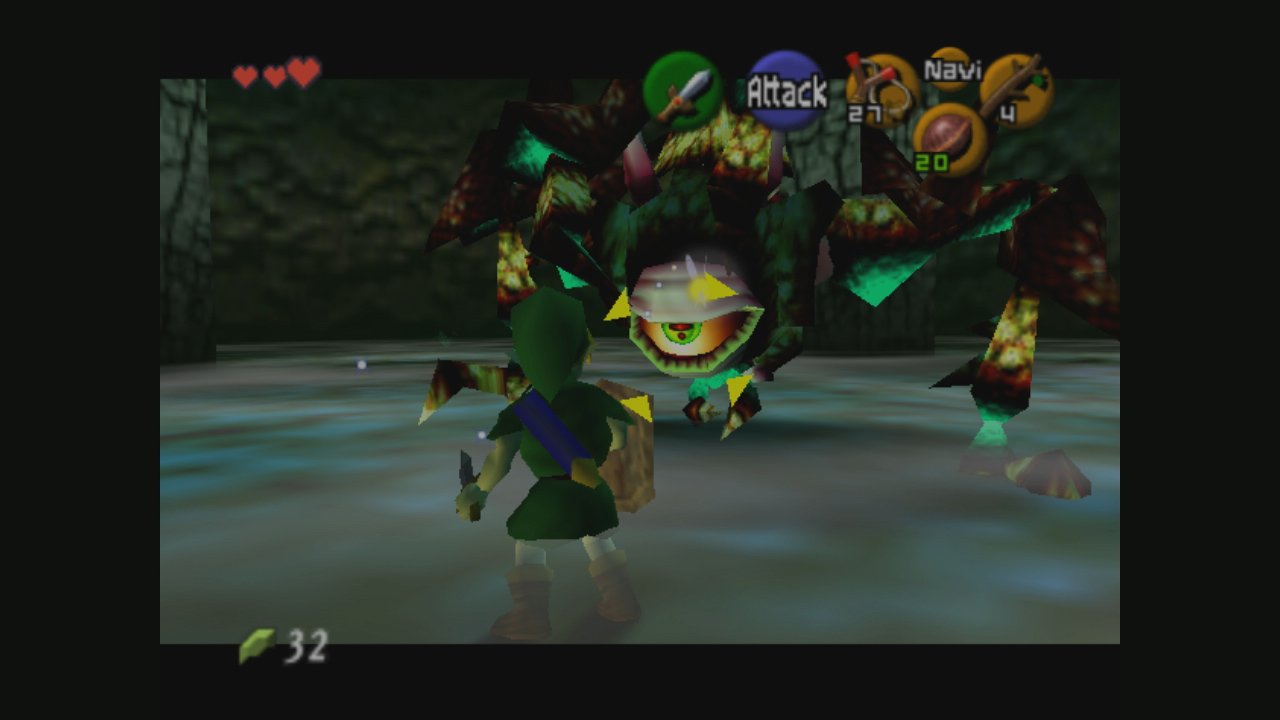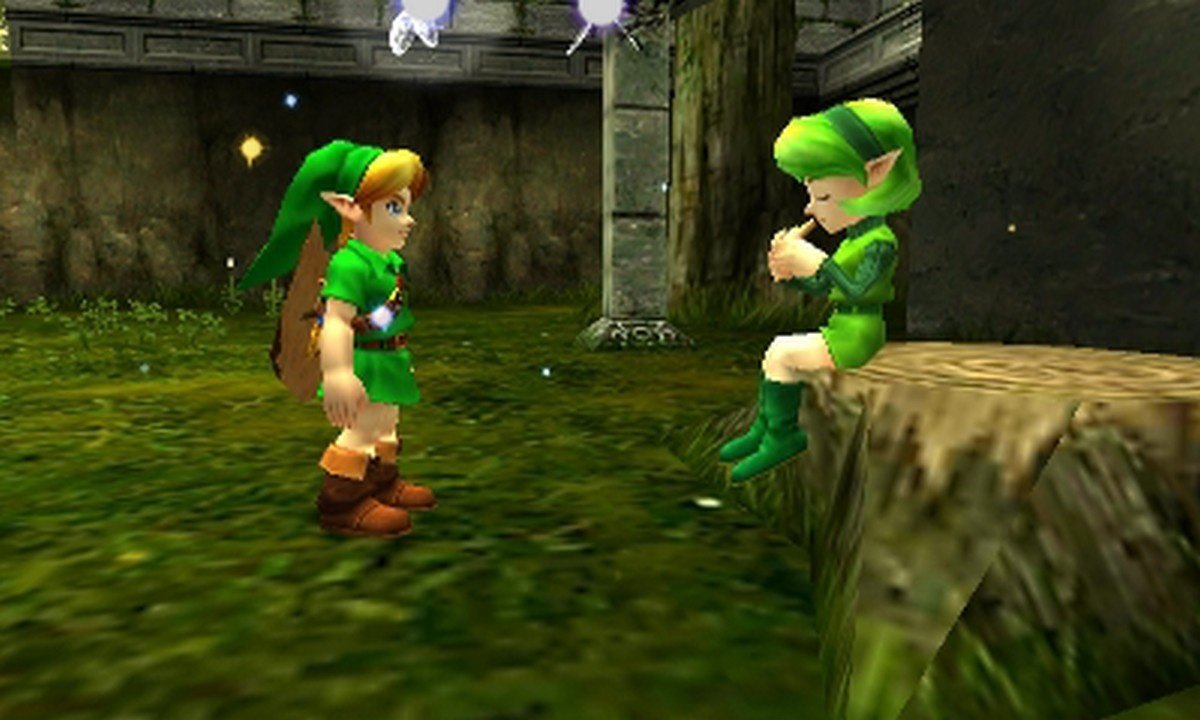FEATURE: A love letter to 'The Legend of Zelda: Ocarina of Time' – why the N64 game is still magical 20 years on
Written for NME [23/11/18]
Two decades on, Ocarina of Time still feels monumental
Cast your mind back 20 years. Cher’s ‘Believe’ is dominating the UK singles chart for the seventh week in a row. Michael Owen is a national hero. David Beckham is a national embarrassment. George Michael delivers a massive ‘fuck you’ with his ‘Outside’ video. B*Witched enter the public consciousness. 1998 – what a year. And then what comes along? Only the world’s greatest video game, The Legend of Zelda: Ocarina of Time.
As one Gamespot critic noted shrewdly at the time, Ocarina of Time is “the masterpiece that people will still be talking about ten years down the road”. But here we are, another decade on, and critics are still enamoured by the Nintendo 64 title. Some argue that it’s got meatier chops than even the latest title in the Zelda franchise, 2017’s epic Breath of the Wild (available on Nintendo Switch/Wii U).
For an inquisitive eight-year-old in ‘98, Ocarina of Time’s ‘hero’s journey’ story arc was simple enough to not distract from the challenge of mastering the game’s abundant cognitive tasks.
Your aim is to guide Link, a elven-like child who lives amongst the ageless Kokiri race, through dark dungeons, magical forests and barren deserts as part of a rescue mission to save the game’s titular character, Princess Zelda. Peace must be restored to the once harmonious land of Hyrule that’s been ravaged by the power-hungry Ganondorf.
As the highest rated video game in history nears its 20th anniversary, here’s a by-no-means-exhaustive look at how Ocarina of Time set a new benchmark for action RPGs with its intricate design and innovative gameplay. This was a game that inspired your soul, educated your mind, and ultimately rewarded your curiosity.
Beautiful visual design
Kokiri Forest is quite simply love at first sight. A 3D-rendered landscape of pure, bucolic joy – all glistening streams, tidy vegetable patches and knobbly treehouses – is introduced in the first few moments of the game via the point-of-view of Navi, Link’s new fairy companion. It’s the small, graphical details that immediately delight. Link’s cosy room, where we first meet him, has food on the table, pots stacked to one side, and gardening rakes leant by the door. The time spent exploring Link’s rural home village (collecting rupees, chatting to locals and so forth) is utterly charming. By merit of such detailed design, the game plunges you into a world that captivates from the offset.
Ocarina of Time is later occupied by dungeons, monsters and epic journeys, but for a child growing up with Harry Potter and Pokémon, it was Japanese game designer Shigeru Miyamoto and his team’s ability to create a detailed world that felt real, despite it being a fantasy, that enthralled so much. There’s old beer bottles strewn on the ground in Market Town’s ‘Back Alley’. There’s crackling stoves inside houses, visible etchings on gravestones in Kakariko Village. Multi-coloured mason jars line the inside of Lakeside Laboratory.
Time hasn’t been totally kind to the game’s blocky, late ‘90s graphics but the designers’ microscopic regard for detail has burnt the vibrant gaming experience onto memory. In IGN’s 1998 review of the game, Peer Schneider wrote: “The graphics are incredible…the towns are highly detailed with elaborate wall textures that are directly affected by Link’s glowing fairy, Navi, and the beautiful day/night changes. Add to that minutes of real-time rendered cutscenes that shape the story and you have one of the best looking console games ever made.”
Innovative gameplay
‘Z-lock’ targeting was introduced in Ocarina of Time, which went on to influence other games – think of the camera lock in Grand Theft Auto III. This ‘Z’ button located on the N64 controller’s underside enables players to lock on to enemies and attack them with a range of moves whilst keeping them in view. This made the game eminently playable, especially as a child still getting to grips with video games.
One of the most enjoyable parts of the gameplay is riding Link’s horse, Epona, through the Kingdom of Hyrule. The speed at which you cross lands felt revolutionary at the time – not to mention the breathtaking scope of the world that Link traverses. There’s great attention to detail here, too. You feed Epona carrots to make her go faster. Dust visibly settles behind Epona’s hooves and Link’s “heeyaw” sound effects whip her into gallop.
Besides the standard objectives that fans would recognise from earlier Zelda titles, such as using bombs to blow open hidden passages, Ocarina of Time pioneered the extensive use of learning songs on an instrument to advance the game. The clay flute ocarina enables Link to warp, solve riddles and change the weather. You can even perform ‘Epona’s Song’ in front of a cow to fill up a bottle with energy restoring Lon Lon Ranch Milk. Pay heed to the game’s countless musical leitmotifs, and you’d reap the rewards.
What keeps you engaged for hours on end in Ocarina of Time is that the more you explore, the more you learn. You discover that planting magic beans in soft soil will grow a bean platform that helps transport Link to otherwise inaccessible places. You learn that shooting a fire arrow to light a beacon will unlock a door. Stick your iron boots on to engage a foot switch to open a room. New puzzles are presented at almost every opportunity, and are often more advanced that the preceding ones. The game is an education to say the least.
Captivating side-quests and mini-games
You could spend double the average time it takes to complete the game – roughly 30-40 hours – by focusing squarely on conquering every side-quest like a total nerd (see me). In some ways these periphery games are more enjoyable than the game’s central tasks. Take, for instance, the most zen mini-game of all: fishing. There’s a little haven of a fishing pond near Lake Hylia where you can rent a rod for 20 rupees and spend as much time there as you desire. And it’s almost as relaxing as real-life fishing.
Besides that, you can also help the ‘Cucco Lady’ in Kakariko Village retrieve her cuccos. How about tracking down some fairies to boost your health? Or trading Happy Masks to eventually talk to Gossip Stones? There’s plenty more games to lose the day to such the archery range and Bombchu Bowling. Nintendo could have combined these challenges into one game, sold it separately, and people probably would have still bought it.
Music and sound design
Music is integral to Ocarina of Time. Nintendo’s in-house composer, Koji Kondo, wrote a whole book of gorgeous songs. Some tunes will admittedly rattle around your skull for a few too many days (see ‘Saria’s Song’ and ‘Song of Storms’) but the likes of the soothing ‘Zelda’s Lullaby’ and the majestic ‘Song of Time’ are incredibly emotive, unforgettable melodies. They’re vital to play to unlock new chapters in the game. Elsewhere, even some of the background dungeon music resonates to this day, such as the creepy, Philip Glass-esque ambient Forest Temple soundtrack.
Subtleties in sound design also help immerse you into the game’s world. As Link becomes weak during battle, his breathing audibly shallows. If you leave Link motionless he yawns loudly. Surround-sound envelops you in a world full of market chatter, shuffling footsteps, squawking chickens, thunder claps and chirping birds. Again it’s the attention to detail, this time with sound, that contributes to cementing such a memorable playing experience.
Ocarina of Time remains one of the most loved games in Nintendo’s history – arguably even across the entire industry spectrum. It’s simply one of the greatest ever creative video game endeavours. To this day it’s hard to think of other developers who’ve so smartly and beautifully combined a vast myriad of components. I am forever grateful.





